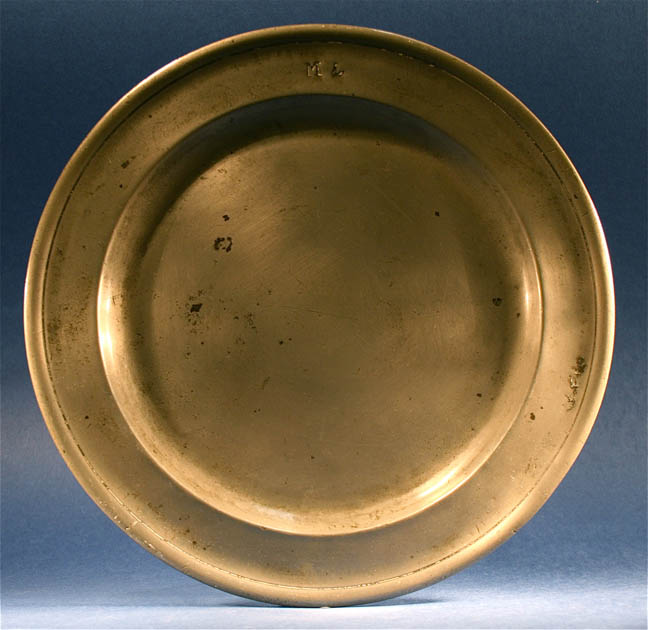

Title: Early Signed M. L. Hallmark Antique Pewter Display Plate Eating Dish
Shipping: $29.00
Artist: N/A
Period: 18th Century
History: N/A
Origin: North America > United States
Condition: Museum Quality
Item Date: 1780 to 1800
Item ID: 5008
We think This Early English Pewter Plate, c. 1780s -1800s. The plate has a single reeded rim with a shallow bowl. Top of the plate has a mark of M.L. Pewter plate or underplates, handmade. This is a very old authentic antique pewter piece. Aged patina it has a bright flat finish, similar to polished silver. Pretty antique pewter plate. Measures 9 1/5" in dia and is in very good gently used condition. The following pewter item is a antique original, dating from either the 18th century, or early 19th century. All are at least 150 years old. Many times the style of pewter from this period changed little over the decades, as often the same molds were employed for many years. We attempt to describe these pieces as accurately as possible and when possible, give our opinion as to region of manufacture and date. All have minor scratches and a nice patina consistent with their age.
Link: http://en.wikipedia.org/wiki/Pewter
Pewter was first used around the beginning of the Bronze Age in the Near East. The earliest piece of pewter found is from an Egyptian tomb from 1450 BC.
Pewter items are often found in churches. Use of pewter was common from the Middle Ages up until the various developments in glass-making during the 18th and 19th centuries. Pewter was the chief tableware until the making of porcelain. Contrary to urban legend, the use of lead-containing pewter tableware was unrelated to the mistrust of tomatoes as a foodstuff in Northern Europe during the 16th century. Mass production of glass products has seen glass universally replace pewter in day-to-day life. Pewter artifacts continue to be produced, mainly as decorative or specialty items. Pewter was also used around East Asia. Although some items still exist, Ancient Roman pewter is rare.
"Unlidded" mugs and lidded tankards may be the most familiar pewter artifacts from the late 17th and 18th centuries, although the metal is also used for many other items including porringers, plates, dishes, basins, spoons, measures, flagons, communion cups, teapots, sugar bowls, beer steins and cream jugs. In the early 19th century, changes in fashion caused a decline in the use of pewter flatware; however, there was increased production of both cast and spun pewter tea sets, as well as whale-oil lamps, candlesticks, etc. Later in the century, pewter alloys were often used as a base metal for silver-plated objects.
Today, pewter is used in decorative objects, mainly collectible statuettes and figurines, game figures, aircraft and other models, (replica) coins, pendants and so on. Certain athletic contests, such as the United States Figure Skating Championships, award pewter medals to the fourth place finishers.